
Just south of Taguines Lagoon around a sleepy little bend in the road lies Katunggan Mangrove Park. The obscure little gem is one of the many stops included on our ECO-Tour “Hidden Treasures of Camiguin”. This wondrous collection of Black Mangroves is guarded by a lone watchman who can be found quietly sitting just inside the entrance. Sign into the logbook before you proceed along the bamboo paths suspended over the wetlands and out into the myriad of roots reaching up through the dense substrate of the high tidal pools.

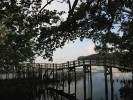
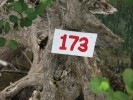
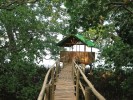
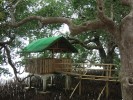
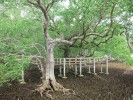
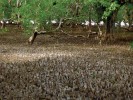
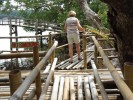
There are hundreds of Black Mangrove (Avicennia Germinans) marked for protection and countless seedlings among them growing out from the shoreline into the sea. One can walk along the bamboo bridges taking in the views of this ethereal place or if brave enough even stay overnight in one of the huts looking out to the ocean.
Camiguin Island has always had a green vision. This project, amongst others, shows the efforts being made by the Municipality of Mahinog to perverse the island’s natural wonders. This opens up an excellent opportunity to educate the people so that future generations will continue their traditions and understand the importance of its protection.
This species of mangrove differs from the red mangrove in that its roots extend out horizontally under the waterlogged sedimentary soil and then vertically up toward the surface. When the tide is low, these roots, or pneumatophores, supply air to the underground root system. This adaptation allows the Black Mangrove to live in a habitat where its competitor’s cannot. The surface of these aerating roots is spongy. Fishermen have been known to use these roots to make corks for fishing nets by shaping the roots into floats.

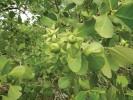
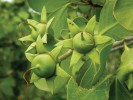

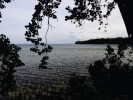
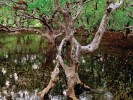
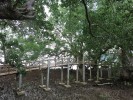

Another adaptation of this magnificent plant is its ability to excrete out absorbed salt allowing it to live on the edge of the sea or in brackish waters. Each leaf has special pores that excrete the salt through the leaves often giving them a whitish color.
Reproductive adaptations, viviparity and propagule dispersal, give the mangroves an increased chance of survival. Seedlings germinate while still attached to the parent tree. Seeds sprout into 1 inch (2-3 cm), lima bean-shaped propagules before dropping into the water below. The pods can float for long periods of time, sometimes up to one year, before the sapling finally finds a sedimentary bottom and takes root.
This collection of mangroves has the dual purpose of acting as a barrier protecting the coast and providing the coral reefs with a nursery area and food source.
Mangroves protect the shoreline area from being ravaged by passing typhoons, large waves and flooding. They help prevent erosion by stabilizing the sediment within their roots. They also maintain water quality and clarity by filtering out pollutants.
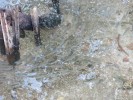

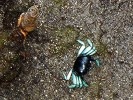

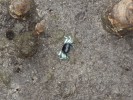
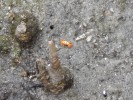
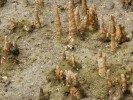
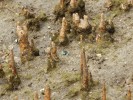
These mangroves host many species of fish, microorganisms, algae, crustaceans, mollusks, amphibians and birds, to name but just a few, some of which are threatened or endangered. This habitat provides a constant supply of leaf litter, an essential part of the food web while offering refuge to young creatures from large predators. Many will spend at least some portion of their lives within the protective roots system, while others will continue to live out their lives feeding and nesting within the mangroves.


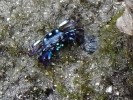
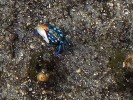
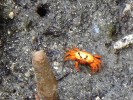
Without these beautiful plants out shorelines would slowly wash away. Rainwater would bring land sediments out to the pristine reefs shrouding them and blocking out the sunlight they need to flourish. Many important fish, invertebrates and other wildlife would lose their habitat needed for reproduction. The fishing industries would suffer a dramatic decline as a direct result of the depletion of our waters due to the lack of healthy mangrove habitats.

